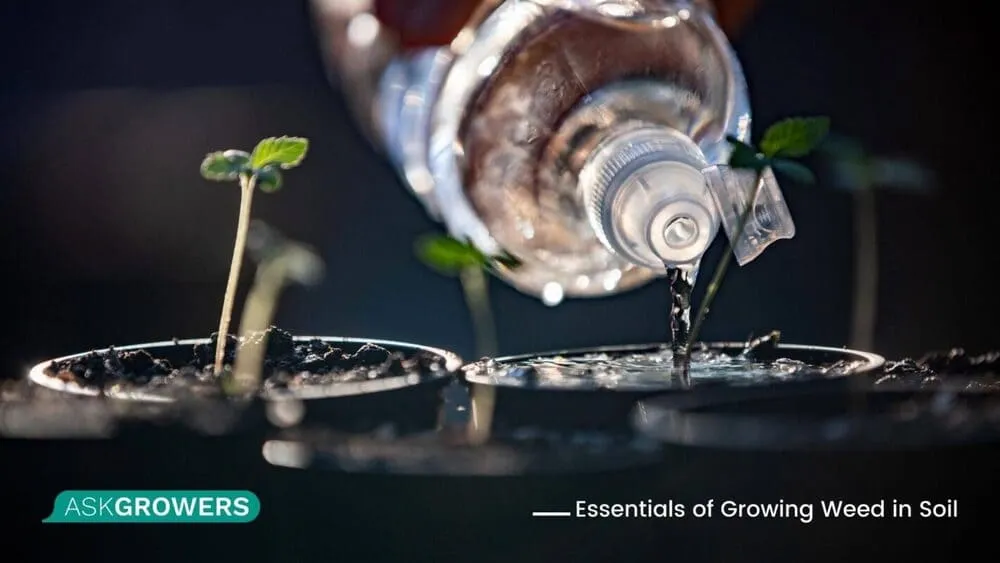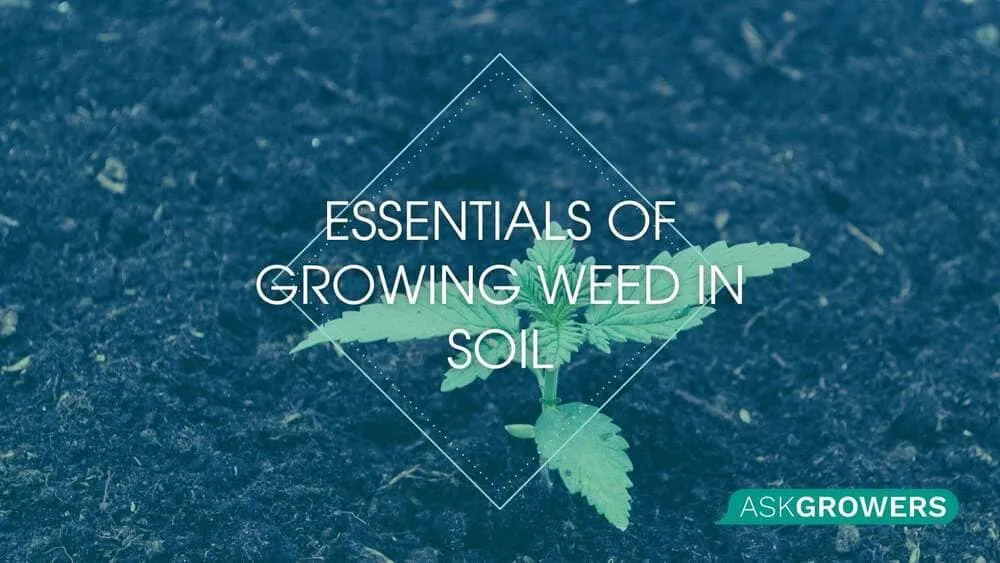There are several popular methods of growing weed, and the individual grower’s choice depends on many factors. You should consider the number of plants you plan to nurture, your budget for the growing endeavor, and seasonality/weather conditions in your location.
If you’re a newbie and just want to try to grow a couple of plants, probably the best option to go for is growing cannabis in soil. This variant doesn’t involve buying any special equipment and helps growers achieve optimal outcomes by simply watering their plants and protecting them from pests and disease. Here is a step-by-step instruction to guide you through all the growing procedures.
Why Grow Your Weed in Soil?
The variant of growing your weed plants in soil often comes as the simplest and the most evident of all growing methods. You’ve probably dealt with a plant or two in your lifetime, so you have a gardener’s experience to manage the cannabis plant as well. It’s a sizable benefit compared to hydroponic or greenhouse setups that can be too costly or complicated for inexperienced newbies.
Without a doubt, this method is straightforward. All you need to do is germinate your seeds, plant them into the outdoor soil or a pot, and water them regularly, waiting for the bud harvest. Some growers wish to maximize their chances of high yields by using store-bought soil and nutrient solutions. Another enhancement variant is to apply compost as a natural fertilizer or purchase nutrient-enriched soil specifically meant for cannabis growing. Thus, you will receive a decent yield with minimal effort in any way.

The Growing Process
Though you might have grown some plants before, dealing with cannabis may still arouse some questions. How to plant marijuana seeds directly in soil? What preparatory steps to take? Here are the starting steps:
- You can plant weed seeds directly into the soil, but they may take longer to germinate. Weed germination occurs at higher temperatures.
- The plants that develop from seeds have more robust root systems and require less water for optimal development.
- The best way to go is to plant seedlings or clones into the soil, with germination happening in a more favorable, controlled environment (e.g., your greenhouse or at home).
How to prepare the soil before planting weed? You need to remove rocks and scarify the soil for more effective planting. Ensure that the spacing between your plants is consistent, as they will grow much larger with time, requiring free space for development. So, putting them too close to one another will complicate pruning and deprive them of the fresh air and sunlight vital for healthy growth.
Which Soil to Choose?
The majority of growers wishing to plant their marijuana in pots are concerned about choosing the best soil for growing weed. Using a pot is ideal if you are okay with the outdoor weather conditions but want to enhance the soil quality to achieve higher yields.
Indeed, experienced weed producers caution newbies against choosing the first best soil mix in a nearby flower shop, as typical soil for ornamental plants doesn’t fit the nutritional needs of weed completely. Here are some expert recommendations for selecting the potting soil for cannabis.
- Loam is regarded as the best soil mix for growing weed as it contains the proper concentration of clay, sand, and silt.
- When choosing soil for your cannabis plants, consider its texture, drainage ability, and water retention. Signs of good soil are a dark color, richness, loose texture, and an ability to hold water without getting muddy.
- Experienced growers often add 30% perlite to aerate the soil and improve its drainage.
- It’s also possible to add light, airy white rocks to increase drainage.
- Vermiculite can lighten up the dense, heavy soil and improve water retention.
- Adding worm castings is also a good idea for adding beneficial micro-organisms, giving your weed a natural nutrient source, and improving soil texture.
Watering Recommendations
Another critical question is, how to water weed plants in soil? While you need to avoid overwatering at all costs, your plants will still need sufficient irrigation. Thus, you can opt for the drip irrigation system to optimize the water expenditure and maximize your yield.

- The simplest method to check whether your plant needs watering is to lift the pot (if it’s not dug into the soil). Wet pots are heavier, signaling that the plant doesn’t require watering at the moment. Lighter pots contain dry soil, showing that you need to water than plant right now.
- Knowing the pH value of the foil into which you plant the weed is essential. The pH value affects the drainage speed and informs the grower about the desired frequency and intensity of watering.
- You need to avoid rain watering by creating a greenhouse or a simple cover over your plants.
- Cannabis seedlings require more water during the first 1-3 weeks of development. After that, you should reduce the humidity level.
- Use a spray bottle to mist the cannabis seedlings; this is a much safer way to keep the humidity level high without risking overwatering the plants.
Also, make sure you supply the correct combination of nutrients with water. When the plant only starts developing, it needs more nitrogen. But at the flowering stage, too much nitrogen may burn your plant or ruin the harvest. Weed needs more phosphorus during flowering, so you need to choose nutritional solutions depending on the growing period.
Conclusion
These guidelines can help you choose the optimal soil quality and arrange a suitable watering schedule for your outdoor plants. Also, keep in mind that the cannabis soil pH should be between 5.8 and 6.3, which is closer to neutral. Otherwise, the plants will feel uncomfortable and yield few buds or develop hermaphroditism.

